Content
- Video review
- Equipment and design
- Software
- Camera
- Performance and Benchmarks
- findings
The face of the flagship Infinix Zero series in 2022the ambitious Zero Ultra with a 200-megapixel camera and 180-watt charging has become ambitious, but there is also a more affordable model in the line. This is Zero 20, the main features of which are advanced cameras: 108 megapixels at the base, 13 megapixels with autofocus and a 60 megapixel front camera with OIS (!!!) and also autofocus. But not a single camera? What else is there in this model? Let's figure it out together.

 |
Infinix Zero 20 Specifications |
|---|---|
| Network | 2G, 3G, 4G, 5G |
| Firmware | Android 12 with XOS 12 |
| Screen | 6.7″, 2400×1080 pixels, 20:9, 393 ppi, AMOLED, 90 Hz, touch 180 Hz |
| Chipset | MediaTek Helio G99, 6 nm CPU: 2 x A76 x 2.2 GHz + 6 x A55 x 2 GHz GPU: Mali-G57 |
| Ram | 8 GB |
| ROM | 128/256 GB |
| SIM and memory card | Triple tray (2 x nano-SIM + microSD) |
| Camera | Main: 108 MP, Samsung HM6, 1/1.67″, 0.64 μm, f/1.8, autofocus, video recording 1440p@30fps wide angle: 13 MP, Samsung 3L6, 1/3″, 1.12 μm, f/2.2 autofocus, video recording 1440p@30fps Depth sensor: 2 MP |
| Selfie | Waterdrop notch, 60 MP, f/1.8, autofocus, OIS, 1440p@30fps video recording |
| Battery | 4500 mAh |
| Charging | USB Type-C, 45 W |
| Wireless interfaces | WiFi 5 Bluetooth GPS FM radio |
| NFC | there is |
| Biometrics | Fingerprint scanner (side) |
| Sound | Stereo speakers 3.5mm headphone jack |
| Water protection | Not declared |
| Dimensions and weight | 164.4 x 76.7 x 8 mm 196 g |
Video review
Equipment and design
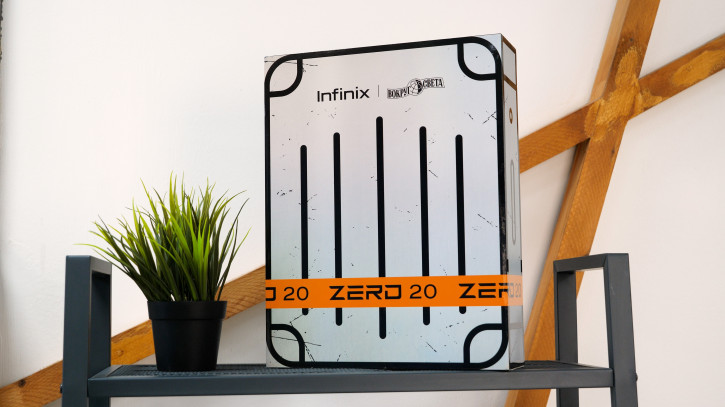
The phone came to us in a gift box, but inThe Infinix Zero 20 comes in a very long white cardboard box. It looks like there should be a ton of accessories, but in fact the kit is extremely standard: documentation, a SIM needle, a silicone case, a USB cable and a 45W charger. Let's talk about the charging speed at the end, but for now I have a question for the case. Why is the jumper on the front of the power button so thin that it doesn't stay on and the whole case slides back in that place? It is clear that the problem is not critical, but how did this happen at all?

There are three colors in nature:turquoise, dark gray and golden with a bluish tint. Not blue and yellow, don't worry. The body is mostly plastic; the chamber protrusion is made of metal. The phone looks beautiful, but for the sake of this beauty, ergonomics were betrayed. Flat ends dig into the hand and cause significant discomfort. In addition, they are quite slippery, so you have to hold on tight, which enhances the effect. However, this is all only if you carry the phone without a case, and Infinix took care of the case. And about the film, by the way, too: it is applied from the factory.

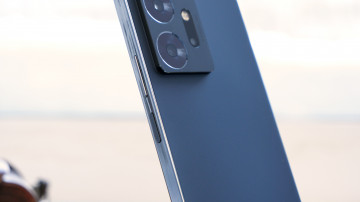


Infinix Zero 20 was not designed to be a smartphonepremium class, so they didn’t cut out the audio jack, nor did they stint on the 3.5 mm headphone jack. It would always be like that. True, at the same time they put the usual buzzing vibro. In tandem with it, the earpiece works: Infinix tried to make a full-fledged stereo pair here, and it sounds really good, but the top speaker is so overstressed that it vibrates half the phone. At the same time, the multimedia speaker does not transmit vibration to the case at all.

The AMOLED screen of the smartphone has a resolution of 2400x1080points with a diagonal of 6.7″. There's a teardrop cutout at the top, and you can tell it's somehow outdated; but taking into account the 60-megapixel sensor and OIS, the hole in the screen would be too huge. So it's better this way. The maximum screen frequency is 90 Hz; in auto mode it is almost always 60, so set it to forced 90. They are really forced - even if the application does not support high frequencies, the screen will still flutter at 90 Hz. Touch is always 180 Hz. Well, in general, the panel is budget, a little less contrast than you expect from AMOLED, but still not bad. The PWM level is acceptable.
Software

Infinix Zero 20 is based on Android 12 with proprietaryshell XOS 12. It was a big step forward compared to XOS 10 - less poisonous green elements, more pleasant visual style. There is almost no pre-installed garbage left, and the input tool from Yandex is now used as a standard keyboard - one of the few where a swipe in Russian works better than Gboard. The shell is smooth, nimble, but during the use I encountered a couple of bugs, once I had to reboot the phone. But usually everything works well.































By the way, I did not write this in the section about the screen, butthis phone does not have any of the "proprietary bugs" of Infinix smartphones: the high frequency of the screen works even with a low battery and even in Telegram. Glad the issues are being fixed! I hope that updates will be released for older models as well.
Cameras

The Infinix Zero 20 has a triple rear camera setup.The main module flaunts a resolution of 108 megapixels, but in fact it uses a budget Samsung HM6 sensor, familiar to us from the Infinix Note 12 Pro, Realme 9 and Xiaomi 12T. The 13-megapixel wide sensor is based on a simple 1/3″ Samsung 3L6 sensor. Both of these cameras are equipped with autofocus. Not without a 2-megapixel plug, alas. How do these cameras shoot? Let's look:

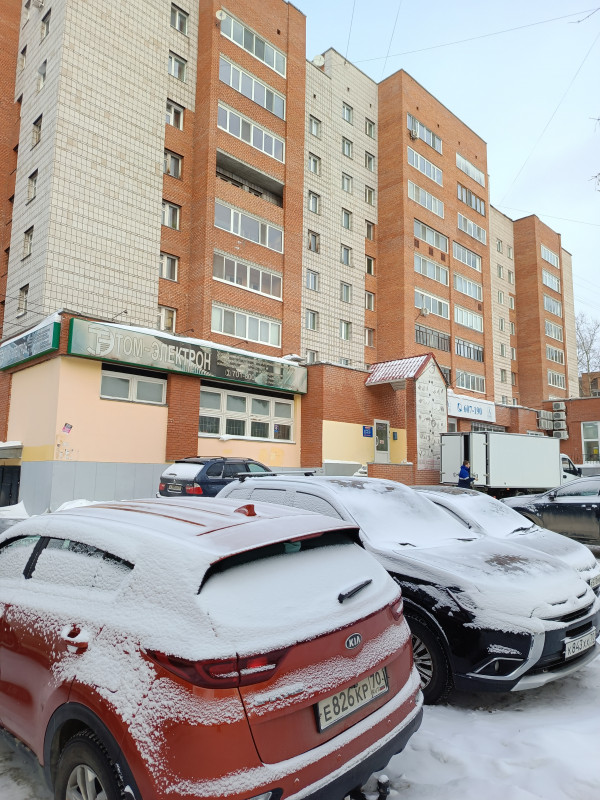



















In good light, the main camera capturesGreat. High detail, natural color reproduction, minimum oversharpening and noise. In general, the algorithms have done well. Although they sometimes mess up - among the examples I shot there is one blurry frame, one heavily underexposed and several photos that lacked dynamic range. The wide-angle camera is noticeably weaker, but still copes with its tasks - and thanks to autofocus, they include not only landscapes, but also macro. With a lack of light, the Super Night mode allows you to get very beautiful shots, but you need to watch them strictly from the phone screen: the detail is very weak.




But the main pride of the Infinix Zero 20 is notrear cameras and front. There is a sensor with a huge resolution (60 megapixels), and autofocus, and even optical stabilization! How long has it been since you last saw a smartphone with OIS on the front camera, but without OIS in the main camera? I remember Sony used to do this. Well, now Infinix. And, I must say, she shoots cool. Just don't forget to turn on Auto-HDR if you're shooting outdoors, as there's a good chance you'll end up with a white background.

All three useful cameras can write video1440p@30fps, while the base and front are also 1080p@60fps. True, you can not switch between cameras during the shooting. The image quality is more than decent for an inexpensive smartphone; Infinix is traditionally strong in this component. I would like to complain only about the slow autofocus of the main camera - it is much faster wide.
Performance and tests

The hardware foundation of the Infinix Zero 20 is very goodthe familiar MediaTek Helio G99 chipset. This is the flagship of the 4G-series MTK, made according to the 6 nm process technology, which means it is very energy efficient and generates minimal heat during operation. And as a result - no throttling, which screenshots from benchmarks confirm with pleasure. The manufacturer added enough memory to a good processor: 8 GB of RAM and a quarter of a terabyte on the built-in storage, which can be expanded with a microSD card.


Despite the fact that we have already been a dozen timesWe tested the MediaTek Helio G99 in games, on Zero 20 I again played a little in SuperTuxKart, Genshin Impact, Ballz and Hungry Shark World. In the first two games, I had to lower the graphics a little (to 4/6 in SuperTuxKart and to “high” in Genshin Impact) to get a comfortable framerate, and the second two, of course, ran great without any optimizations. Performance is excellent for its class.
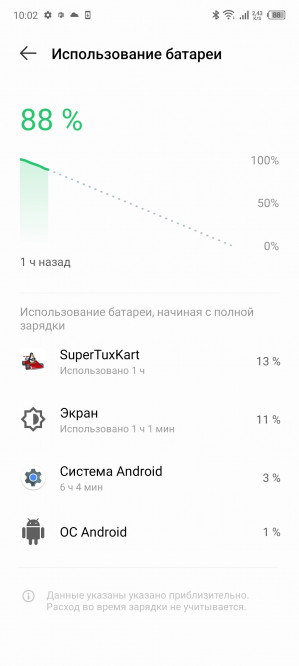



The capacity of the built-in battery is 4500mAh Thinking it wasn't that much, I tested it with autohertz instead of a constant 90hz, and overall the results were so-so. In an hour of YouTube, the phone was discharged by 10%, in an hour in the browser - by 16%, in an hour in SuperTuxKart - by 12%. In just a day of testing (there were still benchmarks and chatter in the telegram), the phone was discharged by 90% in 6 hours and 18 minutes of the screen. Well, that is, a full charge would be enough for 7 hours. Enough for comfortable use, but competitors can do better.

The bundled 45W charger fully fillsphone battery in 59 minutes. And already after 15 minutes the charge reaches 38%, and after another 15 minutes - 66%! After the 85% mark, the process slows down a lot to save battery. Of course, against the background of Infinix Note 12 (VIP), this result looks faded, but in general, charging up to two-thirds in half an hour in the budget is good. This is cool!
Conclusions
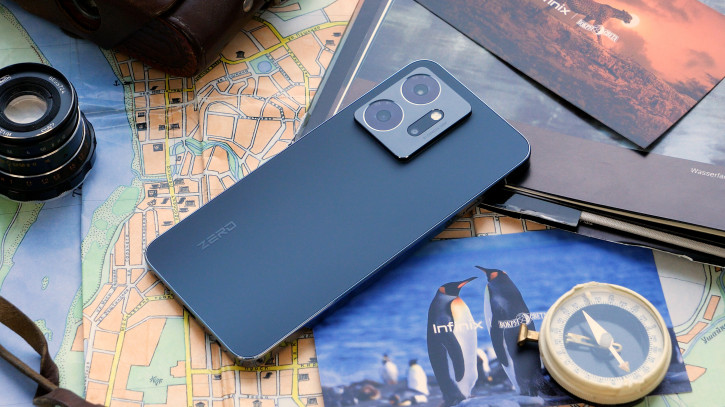
In the middle of January, when I write this text,Infinix Zero 20 can be found in our retail for 19,990 rubles. And this is a very good smartphone in this price range, although there are plenty of other options on the market. I definitely recommend it to those who like to take selfies; it's hard to compete with the Zero 20's front camera. I definitely do not recommend it to those who are critically important autonomy - this is the weak point of Zero 20. And the rest I advise you to take a closer look at this model, feel it in the store, evaluate ergonomics and software - and even then decide whether to choose Zero 20 or not. It's definitely worth a look.
© Oleg Lazarev.